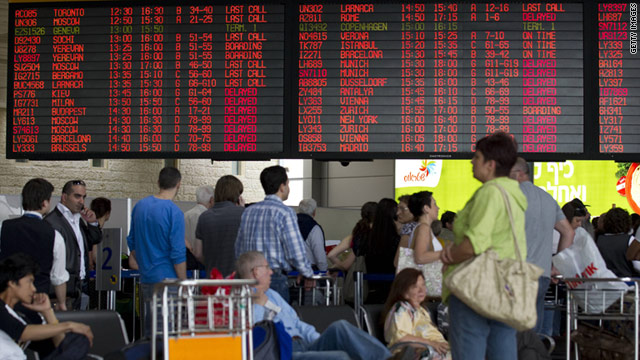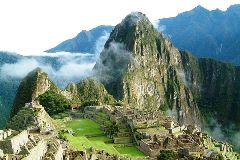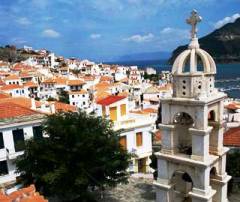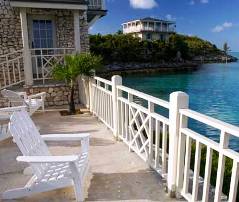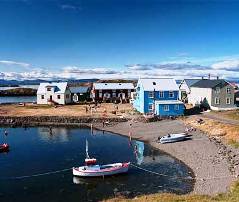1) TO DO BEFORE YOU GO:
* if you can't decide which countries to go to: print off information from LP's Destination pages and base choice on things to see/do, cost, culture, climate etc.
* read books with travel tips (list of issues that need to be addressed before you go)
* read the general chapters (health, insurance, safety, money, etc.) of Lonely Planet and other travel guide(s)
* talk to other (ex) travellers, ask for their stories and tips
* for interactive questions and answers via the web, check out Lonely Planet Thorn Tree (
http://thorntree.lonelyplanet.com/thorn/branches.pl) and Eurotrip discussion boards (for Europe) (
http://www.eurotrip.com/cgi-bin/bb/Ultimate.cgi)
* print out the '
Postcards' section from
LP website with latest scams, warnings and tips from travellers
* browse travel-related web sites (see list of URL's further down); copy useful information into Word document; print in small font; copy double-sided onto paper
* use travel brochures (from travel agencies) to get an idea what the countries look like (pictures), and of easiest route between interesting sites; useful information is often included (weather, embassies, dangers, etc.)
* NL: read booklet "Wijs op Reis", issued by Ministerie van Buitenlandse Zaken, available at travel agencies / GWK
* check guidebooks for visa requirements, check this with recent visitors or the foreign embassies or the Ministry of Foreign Affairs in your own country
* find out addresses of your county's embassies abroad
* go see your doctor or health institute for advice, anti-malaria pills and yellow fever shots and other shots that you need (long trip: 6 weeks prior to departure, otherwise 3 weeks will do)
* buy
TC's and cash foreign currency, check if ATM's and credit cards can be used in the countries you're visiting
* bring the music you don't want to miss on CD's or an MP3 player, especially if it's a long trip; sometimes you can burn copies of CD's or MP3's as a gift to locals in visited country
* make a collection of your most comfortable clothes that can also be worn in layers on top of each other. If necessary, buy new ones at Hennes&Mauritz (also good for daypacks) or adventure stores
* you can decide to buy part of your clothes in visited country, but check whether this is doable and if they will have your size (especially when you're tall)
* if you are afraid your backpack will be slashed open with a razor (kids in some countries tape a razor blade to their fingers to do this), you could line your backpack with chicken fence (or maybe just the bottom); or use Pacsafe wire net, see
http://www.pac-safe.com/; disadvantage: may attract more attention; Pacsafe now also makes bags with invisible steel wire lining

* sew secret pockets into the insides of every pair of trousers you're taking, passport size; more comfy than moneybelts
* sew velcro into other pockets so that they're less easy to open and make noise
* make 50% size copies of insurance policies and leave originals at home
* make several copies of passport and visas (if applicable); hide each copy in a different place, give one to travelmate, leave one at home with contact persons
* create yourself a web-based e-mail account, eg. Hotmail (
http://www.hotmail.com/) or similar (yahoo, gmail, etc); access from any terminal with Internet in the world, keep in touch with friends & family; learn before you go: how to use nicknames, create folders, reply and forward, send to more than 1 addressee, use Groups, etc.
* put all your important info (reference numbers, phone numbers, addresses of consulates, airline offices etc) onto your web-based e-mail. If you have a scanner you can even put scanned copies of your important documents onto e-mail. (just compose the mail as normal and send it to yourself). If you lose your originals and your copies you can always retrieve them from your e-mail. Or use a page on your homepage that has no link to it for other people (but you just remember the exact web address)
* optionally: prepare a weblog (blog) where you can post your travelogues and photos while you're on the road (for example
http://www.web-log.nl/,
http://www.blogger.com/)
* break in new shoes (NL: inlopen)
* optionally: take self-defence classes
* for girls: in many countries men will stare at you even more if you show a lot of skin; even with shorts or sleeveless tops. So think ahead and figure out how much whistling/abuse you can take (the local women sometimes see/treat you as whores if you show too much skin). Public transport is the worst place for dressing wrongly. No hiding from the stares!
* optionally: cover brand names of photo camera and other expensive gear with black sticky tape
* make photocopies of city maps from
LP guide: easier to take into town than whole book
* receiving paper mail abroad: American Express addresses (AmEx issue a booklet of all the their addresses) are more reliable than regular Poste Restante addresses in developing countries; ask your friends to underline your LAST NAME for clarity and good sorting; and no funny extras (may cause problems with sorting, or name comparison with passport)

2) ITEMS TO TAKE WITH YOU ON YOUR TRIP:
* especially to developing countries: Lonely Planet guidebook or other travel guide(s)
* daypack with lots of compartments, like small rucksack or army bag (for example with one strap), also to be used as hand luggage in planes and other means of transport
* silk sleeping bag liner, use to go inside sleeping bag or unclean beds (silk preferred to cotton: lighter, dries faster, more comfortable in heat)
* optionally: impregnated mosquito net, hook with screw thread to screw into ceiling or wall in case there is nothing to hang the net from
* optionally: lightweight sleeping bag for cold nights
* moneybelt to go underneath clothing (cotton or other fabric), at least one pocket with plastic lining against sweat
* for solo travellers: waterproof moneybelt to go swimming with; no need to leave valuables on beach (NL: Hema)
* your own padlock for the hotel room doors; less easy to pick than old locks the hotels use; even hotel owner does not have spare key
* tiny padlocks to lock the zippers of your backpack
* cord bicycle lock to lock your backpack to bed in hotel, or to rack in train; or use Pacsafe, see
http://www.pac-safe.com/
*
TC's, and for some countries: also the purchase receipt to prove they are really yours
* cash dollar bills in small denominations to use in case of emergency or in villages where TC's are not accepted; only bring undamaged notes without markings on them
* medical kit (consult
LP guide and doctor for contents); keep prescribed drugs in original container with readable labels; get an international declaration for the medication from your doctor or health institute (also for birth control pills)
* (for certain countries:) health certificate stating you've had yellow fever shot
* vitamin pills
* good photo camera without defects
* small tripod for photo camera self timer; available at photo shops; or use a bean bag to steady the camera
* optionally: walkman / discman / MP3 player
* spare batteries for photo camera and other equipment (test before leaving, even newly bought ones are not always full); rechargeable batteries last longer and are more friendly for the environment; you need to bring your charger though
* binoculars
* Swiss Army style pocket knife (file and scissors come in handy); plus a case/little bag for protection against dust; pack in large pack when flying!, keeping it in hand luggage will cause problems at customs (you'll probably have it confiscated)
* little compass (we used it a lot!)
* clothing that can be worn in layers on top of each other so you don't need to bring many items: wear layers if cold, peel off layer by layer when warmer; I really like
Icebreaker thermal underwear which doesn't look like underwear but like normal T-shirts, is of Merino wool but doesn't tickle or get clammy; thermal underwear pants come in handy as pajamas or underneath day trousers in cold weather

* fleece jacket
* jacket that resists wind and rain to go on top of fleece jacket when necessary (windbreaker)
*
sarong; use as long skirt or short skirt, table cloth, beach towel, curtain, sheet, wrap around souvenirs
* sturdy hiking shoes that are VERY comfortable (do not try to save money on this too much, you'll have to wear them a lot!)
* thongs/sandals (Teva or other) for in dirty showers (think about the tiny animals that can penetrate your foot sole), for rough sea bottoms, and for walking outside in warm countries
* belt for trousers (you will loose weight); best is a belt that looks like a normal one but has zippers on inside to hide bank notes ($) or other paper things (available at market, adventure stores, leather shops, army shops, LL Bean, …)
* trousers that can be turned into shorts by unzipping the legs
* do not take a pair of trousers that is already worn out/has holes in it, frequent use makes it fall apart before trip is over
* for work at restaurants/bars in Australia: black pants (no need for high heels and tights), black shoes (Dr Martens OK), black or white blouse or top (long sleeves)
* baseball cap or foldable cotton cowboy hat (against sun/rain)
* ear plugs for sleeping in noisy areas and on bus/train/plane
* phrase book(s) and/or tiny dictionaries
* small alarm clock, or use cell phone's alarm function (even works when phone is switched off!).
* if sleeping with ear plugs, set alarm to vibration mode and put underneath your pillow. test at home first.
* small flashlight
* credit card size calculator (or use the one in your cell phone)
* Scotch tape
* tiny full year calendar (you lose track of time)
* a few meters/yards of (hemp) rope (line for laundry-drying, many other uses)
* if you can find it, one of those special
pegless elastic laundry lines made or two elastic lines intwined around each other, no need for pegs, just slip the clothes between the intwined elastic bands (get the ones with hooks on the end, not suction caps)
* safety pins in different sizes
* sewing kit: needles, thread (wrap different colours around match sticks), piece of cotton fabric, spare buttons
* empty plastic photo-film boxes for cream, sewing kit, herbs, spices, pills, safety pins…
* fluid toothpaste, needs no water (try at home)
* for toothpaste, shampoo etc.: caps/tops that close by twisting/turning are preferred to caps that flip open; less likely that they open by accident in your toilet bag…
*
ziplock bags to go around shampoo bottle that tends to leak, passport that needs to stay sweat-free, city map that needs to last
* tiny mirror
* nail brush with two sides: use one for nails, other for laundry
* cutlery (fork, fruit knife, spoon)
* cup (for drinks, yoghurt, sliced fruit…); foldable cups exist

* disinfectant soap (NL: Unicura), one block per 3-4 months
* moisturiser for skin
* good sunscreen and anti-mosquito cream/gel; tampons (only Tampax with insertion capsule available in poorer countries, not OB!), and condoms: all these items are hardly available in poorer countries or very expensive, the quality may be questionable
* separate small bags (polyester, cotton or other) in different sizes for all kind of use: keep underwear and socks together; dirty laundry; day tour, protection for souvenirs…
* cotton handkerchiefs = washable; paper ones run out and are not available everywhere, and/or expensive
* bandana (wrap around neck or head against sun, use as glasses case, tiny towel, bind yourself when injured, smear with Vicks/Vaporub peppermint cream and bind in front of nose when on smelly, dusty bus
* for work in Oz: resume/c.v. (optionally at A5 size)+plastic protection folder
* a 'comfortable' pen, especially if you intend to write long letters and keep a journal of some sort
* friends & family's home addresses and e-mail addresses
* small notebook/cahier for money issues, keeping track of expenditures and travellers cheques, addresses, other notes,…
* optionally a notebook in which nice, special people you meet along the way can write a little piece for you; you could leave open spaces for adding their pictures later
* photographs of family members, always nice to show to people who are interested in your life back home
* playing cards, dice, perhaps Yahtzee notebook
*optionally: if you're going to a country where you will have language difficulties: a booklet called "
Point it" as a communication tool: picture book instead of phrasebook
* optionally a DAT-recorder for recording typical local sounds and/or a spoken journal (nowadays various photo cameras can record sounds)
* optionally: hammock
* optionally: small whistle (alarm people when being attacked or other case of emergency)
* things that are available cheaply around the world (so you don't need to bring on the plane): toilet paper, detergent (soap for clothes), soap, school notebooks (good for writing letters), (airmail and other) envelopes, bottles of drinking water, cotton buds/swabs, pens, photo film (mind the overdue date and sun exposure in shop windows! Film is expensive in South America); photocopy shops are found everywhere
* ALSO READ "WHAT TO BRING" IN LONELY PLANET !!

3) DO'S AND DON'TS FOR ON THE ROAD:
3.1) DO'S AND DON'TS - HEALTH
* (in developing countries:) don't drink the tap water, close your mouth in the shower, don't brush your teeth with tap water; be careful about ice cubes in drinks and hand made icecreams
* food in poorer countries: the rule is: 'boil it, cook it, peel it, or forget it!' It should be too hot for immediate consumption, otherwise send it back and have them cook it some more; or you should be able to peel it yourself; with meat be extra careful and make sure it's well-done on the inside; cold salads are a risk, as are ice cubes in soft drinks, and hand made ice creams (if made from tap water)
* don't stroke/caress animals
* keep your fingernails short and clean
* don't pick your teeth with your fingernails (and prevent yourself from doing it unconsciously), but use your Swiss army knife toothpick instead
* try not to put your fingers in your mouth at all, and try to touch food as little as possible with your hands
* in case of diarrhoea: slice an apple into very thin slices (with clean hands and knife!), let slices turn brown, then eat; this should relieve within 12 hours
* only use diarrhoea stoppers like imodium if you really must travel that day. keeping 'the bad stuff' inside is not healthy
* in case of constipation: massage your own belly with your hands and with your muscles (by flattening and bulging your belly) this sort of activates your intestines; also try this: when sitting on the toilet, bend all the way over (forward), then sit up and bend backwards as far as you can, massage your tummy, bend over again, etc. Drinking coffee or (herbal) tea can also help
* in malaria areas: use a an impregnated mosquito net. if you don't have one, try to get a room with large fan (ventilator) on the ceiling, mosquitoes cannot fly as well in the wind it creates
* bacteria can be inside melons, so it's better to avoid melons
* at high altitude (above 2500m/8000ft): be careful with alcohol; its dehydrating effects work much faster at high altitude; instead you should be drinking lots of water and tea (coca tea or other)
* personally I would advise against medication that masks the symptoms of altitude sickness; masking them can be dangerous
* above 3000m/10,000ft water boils at a lower temperature so it takes longer to kill all bacteria
* do not take risks in case you get injured, have a doctor check cuts or scratches for tetanus, if a dog bit you, have it checked for rabies very soon after you got bitten

3.2) DO'S AND DON'TS - SAFETY
* if you feel unsafe in a new country or a new city, first walk around without any valuables until you feel more secure; then start bringing more valuables with you (e.g. photo camera)
* the more expensive hotels usually have an airport pickup service, this may be a good idea if you feel insecure about your first arrival
* try to look like you know where you're going; when you're lost don't check your map in the middle of the street but discreetly inside a shop or something
* be aware of your surroundings and the people around you (or the lack thereof; quiet streets may be dangerous in certain cities); if you feel like someone is following or otherwise targetting you, step into a shop or otherwise try to get rid of them; sometimes even looking directly at them can help, so that they know you're onto them
* when asking for directions in an intimidating area, in my experience it works best to ask the most intimidating / dominant person for help! for example a big guy who's telling a story to his friends. he will often be only too proud to help you and show his friends how well he knows the answer... sometimes even go as far as to escort you :-)
* beware that in many cultures (especially in Asia) it's impolite for people to say 'no' or 'I don't know'. people may even give you all kinds of directions and descriptions, or tell you that 'yes this is the right bus', when in fact they don't know. you will learn to recognize the doubtful answers.
* don't wear ANY jewellery to poorer countries or areas with a high crime rate; even a cheap plastic watch can draw unwanted attention in certain areas
* if you still want to wear a watch, use a cheap one, but better to carry it hidden in bag or pocket; on the other hand in for example Africa it can be a nice trade item for buying souvenirs
* hide valuables in bags while walking outside, don't hang flashy cameras over one shoulder for everyone to see
* don't put a bag on the floor in a bar or at a restaurant, but put a strap around the leg of the chair, and/or keep your foot against it; or place it in your full view on the table
* if you print photos locally: don't send home the negatives in the same bunch, but in a separate mailing for extra safety
* in hotel rooms with windows always check whether the windows are locked securely
* at night, place a piece of furniture or an empty plastic bottle against your door to prevent silent/unnoticed break-in
* the danger everybody has warned you about a million times, but still you almost fall for it sometimes: NEVER ever take a package, jacket, gift or whatever from somebody, and especially never transport other people's belongings for them, even if they are very nice
* stay away from drugs and people who use/sell drugs; before you know it they put it in your bag and you end up in a foreign prison; even if the people are 'so much fun to hang out with' and you 'don't care they're on cocaine, that's their problem'. It could easily become your problem too.
* watch out for fake police officers who want to see your ID; ask for their ID; call another uniformed police officer if you see one; and never give them your real passport but a photocopy; if they still insist, offer to
walk with them to the police station, never get into a car!
* pick your own taxi driver instead of going with the first one that offers himself (or tries to take your guidebook from your hands); in lots of countries any fool can put a Taxi sign on his car and 'become' a taxi driver!
* be well informed of how to recognize genuine taxis; if in doubt, phone for one from your hotel
* if something unusual happens, beware that it may be a diversion to trick you, be extra alert and keep an eye and a hand on your valuables
* read up on the local scams (for example fake bus tickets sold in streets), pay attention to warnings from locals about the latest tricks (and take care that the 'helpful local' isn't a disctraction trick himself, always watch your belongings when a stranger approaches you)
* in most African countries it's unsafe to walk the streets without local escort after dark (which can be as early as 6.30 pm). be back at your hotel or use taxis.
* watch out for thieves among other travellers. leave expensive clothing inside your own room to dry, and take extra care when staying in dormitory rooms

* if you haven't lined your backpack with chicken fence and don't have
Pacsafe, but are afraid of the razor blade trick: when you stand still in a crowded area for example in front of a red light, move back and forth slightly with your pack, so that nobody can touch it without alarming you; when travelling with somebody else you can try to watch each other's packs
* in poorer countries: buy a large plastic, woven potato bag at a local market and put your backpack in it when travelling by bus or air-plane; good protection from dust, dirt, rain (if your pack goes on top of the bus) and theft (your pack looks like somebody's harvest rather than the interesting belongings of a rich tourist)
* keep some spare cash in your pocket (or rolled into a handkerchief), this is less easy to steal than a wallet
* be careful that you don't loose your guard after a few weeks where it comes to your own safety measures; set strict rules for yourself and always stick to them: always lock your door (even if you're just going for a pee), always wear your moneybelt while travelling long distances, always lock your pack to something on the train, etc; remember that you're not doing it for nothing, who knows how many times it has helped before? It may have kept many thieves away only you'll never know.
* you could wear a small whistle around your neck so that you can alarm others in case you're being attacked and perhaps scare away the attacker
* use your intuition! Follow the messages your 'other' sense gives you. If for some unknown reason a specific area or person gives you the creeps (bad karma/ negative vibes), get away from it/him/her. Use your intuition in a conscious way and also try to develop it, even now at home.
* if you make it a habit to always be careful with your belongings and yourself, especially in crowded areas, there is no reason to be paranoid and you can use all your energy to enjoy the beautiful environment; mind you, even in the most dangerous countries theft is mostly a result of lack of attentiveness rather than violence. Also remember that thieves are like predators when picking their victims: they go for the weakest. So if you make sure your belongings are hardest to get to, you should be fine. There are plenty of naïve tourists that will be the victim, pity for them, good for you.

3.3) DO'S AND DON'TS - OTHER PRACTICAL TIPS FROM GRANNY
* use tea-towel (the one you'd usually dry plates with) for a towel: lighter in weight, smaller to pack, dries quicker, cheap, and works just fine (try at home before leaving)
* if you're leaving one place but there's still laundry out drying somewhere, leave a note on your backpack so you won't forget to bring it! (happened to me a few times…)
* each time you take a shower, wash your slip/underwear, so you don't build up a pile
* in moist (tropical) areas: don't leave your wet laundry out at night: may stay wet too long and start smelling bad
* don't leave dirty underwear lying about, but put in a closed bag (may attract ants otherwise, sorry for corny details)
* bring the following items in your hand luggage on a long plane/bus trip: toothpaste, toothbrush, optionally deodorant, change of underwear and socks, small tea towel or bandana, some toilet paper, soap, Swiss Army knife (latter not allowed in hand luggage on planes), medications you might need within a few days (like birth control pill, spare asthma medication...)
* buy a
sarong: to be used as beach towel, curtain, long or short skirt, sheet, table cloth
* if you intend to work in
Oz: get a Tax File Number as soon as you get there
* camping out is often cheaper than staying at hotels or hostels (Chile, Europe) (Australia: best with own car or van) (In Indonesia, Bolivia, Peru hardly worth it though, due to cheap hotels)
* the toilets in fancy hotels, museums and McDonald's are often cleaner than at hostels, so you could use those instead
* if you don't remember what day of the week it is, go to a news stand
* if you intend to buy a car in
Oz: Holden = Australian made, so parts are widely available, for Ford as well
* optionally take a taxi ride to the highest point of a village and walk back down
* in reasonably safe places, often a good way to meet more people is to ask for directions - a lot of locals will quite happily chat with you if you start the conversation
* some US hostels have combination locks on the front door - some never change the code, some change it daily - make sure you ask!
* for arriving anywhere, always have some local currency in the lowest denomination - bartering for a taxi is difficult if the lowest note you have is 3 months wages to the driver! in South America it can be hard to come by small change, so hoard some coins before you're going to need taxis or other places where you won't be able to pay in big notes; after using an ATM go inside the bank and ask for smaller denominations
* sometimes local kids will ask you for some coins of your own country because they collect them; they are just as happy with stamps that you saved from the paper mail you received
* when in Bolivia, don't miss a copy of the weekly newspaper in English called
Bolivia Times, full of beautiful pictures, interesting articles and travel ideas
* on the more luxurious buses the airconditioning can very strong, so bring extra clothes in your hand luggage. (for example all buses in Brazil; 'Cruz del Sur' in Peru; 'Scandinavia' in Eastern Africa). the same goes for many movie theatres worldwide.
* when in Addis Ababa, Ethiopia, pick up free copies of "What's up Addis" that lists events, galleries, sports and restaurants, also see
http://www.whatsupaddis.com/

* when having trouble getting a room with double bed (either because you're not married or gay): make reservation by telephone
* go to McDonald's to escape from your culture shock
* use a school cahier/notebook for writing letters: cheap, compact, easy to use if you start from the middle
* when buying film for photo camera, mind the overdue date and the exposure to too much sunshine in the shop
* take unfinished meals with you in doggy-bag and hand to beggar in the street (only if he/she holds out hand, otherwise you may offend someone); another option is to invite beggar to your table and have him/her join you for dinner
* in some countries (e.g. Indonesia) it is very cheap to have your laundry done by the hotel personnel, but beware that they will be scrubbing it with rough brushes and drying it in full sunshine, might make clothes lose colour
* in case of doubt whether you should take a picture ('but it looks so touristy to do it'/'I already have so many'), take one anyway! Or you may regret it later; the moment will never come back
* when making a picture of a person, ask their permission first
* if a person gives no permission for a photograph or you don't want them to 'pose', you can use a mean trick: above your camera, look very hard at a building or mountain behind the person in question, and point at it and talk about it to your travelmate, but through the lens look at the person and take the picture. After taking it, again look at the object behind the person and nod in a satisfied way.
* apart from your own wallet (or whatever you use), also use a 'joint' one for you and your travelmate. Use it to pay for hotels, meals, public transport and other things that cost the same, while you use your own for souvenirs etc. Now you don't need to exchange money amongst each other all the time to be 'even'. Just deposit a similar amount into the 'joint' wallet every once in a while.
* in cold areas (below freezing), carry photo gear and batteries close to the body to keep it from malfunctioning due to cold
* photo camera may get condensation when changing abruptly between cold and heat (air-con to outdoors); keeping it in plastic and letting it warm before taking it out will help
* always carry a small box of Vaporub/Vicks cream (peppermint smell) and smear it under your nose in case you get nauseated/sick when on a bus on curvy roads or full of smelly people/animals; the result is even better if you smear it onto a bandana and bind that in front of your nose in cowboy fashion (also good against dust and sand)
* Coca Cola can help against nausea, throat ache, intestinal or stomach problems, sleepiness
* floors in building are numbered in the American way in South America; so what Europeans call ground floor, is called 1o piso; first floor is 2o piso, and so on.
* in South America you are not supposed to throw toilet paper into the toilets. The pipe systems are too narrow and will get clogged up. Throw it into the bin next to the toilet.
* before you take a taxi, ask the steward, bus driver or hotel receptionist for the reasonable rate from A to B, or check
LP
* always arrange a price
before you get into a taxi
* bring books (novels) written in English, these are easiest to exchange after you've finished reading them
* an overnight bus trip can be more dangerous (theft, raids), but you do save a night of hotel costs and can be practical if you are good at sleeping on buses. Check
LP and other travellers' warnings for unsafe routes. Bring enough warm clothing (or sleeping bag) in hand luggage for overnight trips in the Andes or other mountainous areas (cold nights).
* in poorer countries: try to get a ride in the back of a truck one time instead of using public transport; often this is reliable/safe enough, it's cheaper, and more adventurous!
* after a few weeks of travelling, read this list again and see if it makes more sense now

3.4) STORING DIGITAL IMAGES
- NEW!
What are the options for storing your digital images if your memory card(s) only last you for about 130 photos but you're going on a long holiday?
1) Burn them onto CD in internet cafes. Bring a few empty CD's for the cafes that don't provide empty ones for you. Always check the CD after burning and before erasing your memory card! You could decide to burn two copies and send one home for extra safety. It can be expensive. (In Tanzania usually around US$5 per CD.) Check whether your camera is automatically detected by most systems (Win2000/XP), or whether you need to install software first. In that case you need to bring the software on CD, and ask the internet cafe owner if you're allowed to install it. Lots of countries have internet cafes with CD burning options, also in countries like Kenya, Tanzania, Peru, Brazil.
2) Bring a portable hard drive / storage device, especially made for memory cards (with slots for the cards), for example by Sitecom or other brands.
3) Bring an MP3 player like iPOD or iAUDIO which doubles as a portable storage device; you can connect it to your camera (data transfer is slower than option 2).
4) Bring a portable CD burner and empty CD's, burn when/where you want to (but bulky: device
and CD's). Again, you could decide to burn two copies and send one home for extra safety.
5) Upload to web based storage sites (for example PBase.com, for about US$25 you get a huge amount of space), but uploading can take ages. Uploading to web pages like Spaces (MSN) or Shutterfly will lower the quality and size of your photos but allow the home front to view your images as slideshows.
6) Bring loads of memory cards. Small and light weight, but way more expensive than the other options.
7) Bring a laptop computer and store them on there. If it can burn CD's, you can burn copies and send them home for extra safety. Bulky and heavy, and a target for thieves. Only a reasonable option if you need to computer for other purposes too.
Or a combination of two of these options for EXTRA safety (for example 1 + 3).
As to options 2 and 3:
20 GB is a nice amount of space to have on a storage device, especially if you also want to bring music (option 3). 30GB or 40GB is even better if you're snap-happy or have a camera of 8 megapixel or more.
If you want to check how many pictures that will allow you to store: put the memory card in your camera, set your camera to the quality you'll want to use. See how many pictures that allows you to store on that card. If it's a 1GB card and you have a 20GB storage device, then multiply that number of pictures by 20 and that's the amount of pictures you'll be able to store on the device. If your card is a 512MB one, multiply by 40, and so on. (512MB x 40 = 20GB).
Always test the device at home before you leave.
More details and tips about anything to do with electronics on the road can be found on this amazing
website by Adrian Warren. On the Lonely Planet
Thorn Tree branch for "Computers, Cameras and Phones" you can post your personal questions and read responses to other people's questions.

4) USEFUL WEB SITES:
· EXAMPLE: INFORMATION ON PERU MAY BE FOUND ON THE WEB SITES MENTIONED UNDER THE HEADINGS 'GENERAL / WORLD-WIDE'; 'LATIN AMERICA'; and 'PERU'.
· AN INDICATION OF THE CONTENTS IS ONLY GIVEN IN CASE THE NAME OF THE WEB SITE ITSELF DOESN'T CLARIFY IT.
· ALSO CHECK OUT THE LINKS THAT THESE WEB SITES CONTAIN.
· THE ONES MARKED WITH A © ARE MY PERSONAL FAVOURITES
This excellent site deserves its own place, so I don't put it under a heading:
© http://www.lonelyplanet.com/ (Thorn Tree for online questions, Subwwway for links, and lots more)
Also very useful if you use the right search terms: http://www.google.com/
4.1) GENERAL / WORLD-WIDE
4.1.1) GENERAL / WORLD-WIDE - HEALTH
Centers for disease control and prevention: http://www.cdc.gov/http://www.travmed.com/
http://www.netdoctor.co.uk/travel/vaccines_index.shtml%20
Mosquito nets (in Netherlands):
http://www.klamboe.nl/%20
4.1.2) GENERAL / WORLD-WIDE - WORK / STUDY
Volunteering:
http://www.workingabroad.com/
http://www.globalvolunteers.org/
Volunteering:
http://www.unitedplanet.org/
Volunteering:
http://www.i-to-i.com/
Volunteer programmes Asia, Africa, Latin America:
http://www.crossculturalsolutions.org/
Volunteering:
http://www.siw.nl/
http://www.volunteeringinafrica.org/programs.htm%20
Volunteer opportunities in South America:
http://bolt.icestorm.com/lyric/south.html
Volunteer International Workcamps:
http://www.vfp.org/
Many links to volunteer web sites:
http://www.chimps.nl/
Working and studying abroad:
http://www.joho.nl/studyjobs/index.html
Working abroad:
http://www.afs.nl/
© Info for first timers or old English teachers:
http://perso.orange.fr/jeremytaylor/forteachers.htm
Working in the Netherlands:
http://jobs.expatica.com/nl
Working in the Netherlands:
www.dutchnews.nl/jobs
Employment network for backpackers and the budget travel industry:
http://www.amazonroad.com/
http://www.workonaboat.com/%20
Teaching abroad:
www.iss.edu/pages/home.html
Teaching English: vacancies etc:
http://www.tefl.com/
Jobs in Africa:
www.africaguide.com/work.htm
http://www.studyabroad.com/
Study Spanish on the web:
http://www.studyspanish.com/
Free online Spanish course:
http://www.parlo.com/
© Learn Spanish guide: online courses, schools in various countries, resources for teachers, etc:
http://www.learn-spanish-guide.com/
Languages:
http://www.travlang.com/

4.1.3) GENERAL / WORLD-WIDE - PAPERWORK AND MONEY
© Visa requirements:
www3.travel.com.au/everest/index.cgi?E=bevisreq
Cirrus ATM's worldwide:
www.mastercard.com/atm
VISA ATM's worldwide:
www.visa.com/pd/atm/main.html
Exchange rates:
http://finance.yahoo.com/m3?u%20
4.1.4) GENERAL / WORLD-WIDE - ACCOMMODATION
Hostels world-wide:
http://www.hostels.com/
Worldwide hostel reservations + location maps:
http://www.medialink.nl/
Hostels USA, Canada:
http://www.hostelhandbook.com/
http://www.hostelamericas.com/
Cheap bed&breakfast for (Dutch and foreign) bikers in the Netherlands:
http://www.vriendenopdefiets.nl/
Free accommodation:
www.autostop.lt/faq/fac.html
Free accommodation:
http://hospex.icm.edu.pl%20/
Free accommodation:
http://www.servas.org/
Free accommodation:
http://www.swapnow.com/
Free accommodation:
http://www.stay4free.com/
Free accommodation:
http://www.travelhoo.com/
Gay & lesbian accommodation directory:
http://www.mongooseontheloose.com/purpleroofs/
4.1.5) GENERAL / WORLD-WIDE - TRAVELOGUES / DIARIES
Collection of travelogues from all over the world:
http://www.travel-library.com/
http://cultureconnect.com/
© A woman on 4 year motorcycling trip to all continents, even Antartica:
www.wimausa.org/WMA_Benka.html
© By tractor from Netherlands to South Pole to support Warchild:
http://www.tractortractor.org/
© Travelogue of couple who hitch-hiked around the world:
http://www.geocities.com/kingachopin/
Motorbike trip around world:
http://it.ncsa.uiuc.edu/~mag/Thompson/
Through Africa on an old Yamaha:
http://www.euronet.nl/users/arold/
South America, South East Asia, Middle East:
http://edweb.gsn.org/andy/travels/index.html
Africa, Asia, Australia:
www.geocities.com/roamabout
© Funny travelogues of various countries; English teaching experiences:
http://perso.wanadoo.fr/jeremytaylor/index.htm
Cycling trip of 28.000 km from North Alaska to South Argentina + many links:
http://www.travel.to/the.americas%20
Travelogue of cycling holidays (in Dutch) and many links:
http://www.vakanfiets.demon.nl/
Travelogue of cycling holidays (in Dutch) and many links:
http://www.home.zonnet.nl/fietsvakantie/
Travelogue of cycling holidays (in Dutch):
www.xs4all.nl/~marcz/fietsen.html
Travelogue of cycling trips:
http://home.wanadoo.nl/moh
Pole to pole trip for the promotion of environmental awareness:
http://www.pole2pole2000.com/
© Europe, Mexico, North & South America, Singapore, etc.:
http://www.spudstravels.com/
Europe, Americas, Asia:
http://travel.to/weecheng
Travel photos Asia & Morocco:
http://www.dom.f2s.com/
Travelogue:
http://www.hupje.net/
© http://www.edouard.com/travel/
Travelogue, tips, links:
http://www.angelfire.com/on2/anotheradventure/
Africa, Europe, Russia:
http://www.stuart150.freeserve.co.uk/hols/
© Travelogue and tips:
http://www.whatwesaw.com/
http://www.raingod.com/angus/Gallery/Photos/index.html
Antartica, South America, Asia:
http://www.hanshupje.net/
Travelogue and many cycling links:
http://www.dewijdewereld.net/ (in Dutch)
Egypt, Peru, Kenya, Tanzania:
http://home.wanadoo.nl/kampie (in Dutch)
Africa, Asia, Europe, Americas:
http://www.reizigerssite.com/ (English version available)
Photo gallery:
http://www.internezzo.com/
Pictures from travellers:
http://www.trippics.com/
www.stormloader.com/users/pintodog/travel.htm
www.traveladventures.org/continents/asia
Bolivia:
www.trafford.com/robots/03-2287.html
Artist / traveller:
http://www.nigelineurope.com/%20
Australia, Thailand:
http://www.avontuur.com/
Many travelogues (mainly in Dutch I think):
http://reisverslagen.startkabel.nl/
Various countries (in Dutch):
http://www.wijreizen.nl/

4.1.6) GENERAL / WORLD-WIDE - PHOTOGRAPHY
www.fodors.com/focus/display.cgi?aid=89
© Free online travel photography course, tips for buying equipment for the first time
: http://www.tribalcog.com/
© Unbiased product reviews; tips for buying equipment for the first time:
http://www.photozone.de/
Compare digital cameras after specifying your criteria, and read user's comments:
www.dpreview.com/reviews/compare.asp
Online course:
http://www.webphotoschool.com/bhphotovideo/
Online course:
www.agfanet.com/en/cafe/photocourse/cont_index.php3
Online course:
kodak.com/US/en/nav/takingPics.shtml
Airport X-rays:
http://www.f-stop.org/
4.1.7) GENERAL / WORLD-WIDE - ELECTRONICS
Create your own weblog to share travel stories and photos: http://spaces.msn.com/Create your own weblog to share travel stories and photos, with maps: http://www.travbuddy.com/© Anything to do with electronics on the road (plug types, storing digital images, etc): http://adrianwarren.com/faq/
© World guides for mobile phones, electrics, phones, internet:
http://www.kropla.com/
Voltages en plug types worldwide:
http://users.pandora.be/worldstandards/electricity.htm#voltage
4.1.8) GENERAL / WORLD-WIDE - SMART TRAVELLING
© http://freespace.virgin.net/gm.smith/travelfaq.htm
Budget travelling off the beaten track:
http://pleth.tripod.com/
© Free e-mail, access anywhere in world:
http://www.hotmail.com/
Free e-mail, access anywhere in world:
http://www.yahoo.com/
Planning checklists etc.:
http://www.artoftravel.com/
© Planning checklists etc.:
http://freespace.virgin.net/travel.guru
www.rainforest-alliance.org
Ecotravel:
http://ujamaatravel.com/
Backpacker's Third World Travellers' Guide and more:
http://ease.com/~randyj/travel.htm
Protection wire net to go around pack:
http://www.pac-safe.com/
"Point it" communication tool: picture book instead of phrasebook:
http://www.amazon.co.uk/exec/obidos/ASIN/3980313026/202-8813567-7536659
Travel tips:
http://bolt.icestorm.com/lyric/tips.html
Backpack sizes and what you can get into them:
http://oase.uci.kun.nl/~mwsk49/packs/
http://www.packinglistonline.com/
Packing checklist for different types of holidays, in Dutch:
http://www.enikneemmee.nl/home/
4.1.9) GENERAL / WORLD-WIDE - OTHER
© http://www.sleepinginairports.net/
Festivals and celebrations around the globe:
http://www.worldeventsguide.com/
http://www.timeout.com/
http://www.joho.nl/travelcenter/index.html
http://www.roughguides.com/
http://www.bootsnall.com/
http://www.packback.com/
http://dmoz.org/Recreation/Travel/Budget_Travel/Backpacking
http://www.travelchannels.com/
General tips for lots of countries:
http://www.wereldreis.com/
© General travel planning resources:
http://www.roughplanet.com/
Lots of links, tips and stories (in Dutch):
http://www.backpacken.com/
General tips and stories on travelling (in Dutch):
http://www.wereldreis.net/
Cycling organisations:
http://www.rogergravel.com/wsl/
Info for travellers by bike (in Dutch):
http://www.wereldfietser.nl/
International people finder & travellers friends reunited:
http://www.lostamigos.net/
Find travelmate:
http://www.travelmate.com/
Travel helpers:
http://www.travellerspoint.com/
World weather info:
http://www.worldweather.org/
Maps & guidebooks:
http://www.catalyst-maps.co.uk/
Backpacker index (links to travel related sites world-wide):
http://www.ozemail.com.au/~backpack/
Subscribe to travel mailing list:
www.onelist.com/geninfo/cat24.html
http://www.escapeartist.com/
Airports:
http://www.airwise.com/airports/
Clean, free bathrooms around the world:
http://www.thebathroomdiaries.com/
Vegetarian world guide:
http://www.veg.org/veg/Guide/
Architecture:
http://www.greatbuildings.com/
Middle East:
http://www.promisedlands.nl/
Buy (travel guide-) books online:
http://www.amazon.com/
Gay & lesbian travel world-wide:
http://www.viajartravel.com/
Gay & lesbian:
www.queercompany.com/holiday/destinations.cgi
http://www.klm.nl/
http://www.airtreks.com/
http://garlic.aitec.edu.au/~bwechner/Documents/Travel/lists.html
Magazine for women travellers:
http://www.passionfruit.com/
Online world maps:
http://www.tte.ch/World/index.html
Adventure magazine:
http://www.outsidemag.com/
http://www.1000traveltips.org/
Unesco world heritage sites:
http://whc.unesco.org/
One day smile, good cause:
http://www.one-day-smile.com/
Yellow Pages, business directory worldwide:
http://www.go4yp.com/
Organised group adventure holidays:
http://www.djoserusa.com/

4.2) LATIN AMERICA
South American Explorers Club:
http://www.samexplo.org/
All the different airpasses in South America: www.lastfrontiers.com/flights_airpasses.php
Brazilian airpasses: www.globotur.com/airpass.htm
© http://www.cinemascope.com/photos/samerica/
Links for cycling in South America:
http://www.geocities.com/TheTropics/Island/6810/index.html
Colombia country info:
http://poorbuthappy.com/colombia
Newspapers:
www.latinvestor.com/newsstand/latinews.htm
Learn Spanish in Latin America, free online vocabulary, poems, jokes, proverbs, recipes etc:
http://www.aulaworld.org/
Language schools:
http://www.amerispan.com/
Language schools Guatemala:
www.trafficman.com/xelapages/schools.htm
Language schools Guatemala:
www.theantiguajournal.com/sponsors/sponsor_foreword_frames.htm
http://www.volunteerlatinamerica.com/
Free or low cost volunteer work in South America:
http://www.volunteersouthamerica.net/
Volunteers Guatemala:
http://www.trafficman.com/xelapages/Volt.htm
Volunteers Guatemala:
www.guatemalainfo.com/
SA airpasses:
www.lastfrontiers.co.uk/airpass.htm
Airline:
http://www.avianca.com.co/
Airline:
http://www.aviatur.com.co/
Airline:
http://www.avensa.com/
International bus S. Am.:
http://www.ascinsa.com/ORMENO/index.html
Brazil, carnival, capoeira:
www.praticus.com/index-i.htm
Colombia info in English:
www.presidencia.gov.co/htm/colomb11.htm
Catagena, Colombia; sailing between Panama and Colombia:
www.salelawrence.com/chome.htm
Internet:
www.chileaustral.com/cybercafe/sacyber.html
Brazil:
www.faunatour.com.br/ingles/ingles.html
Salvador da Bahia, Brazil:
http://www.bahia-online.net/
© Travelogue of one of my favourite travel gurus:
http://www.goodtimebob.com/
Travelogue Venezuela:
http://harryjwagner.tripod.com/
Travelogue:
http://www.geocities.com/Yosemite/8856/
Travelogue:
http://www.itisnet.com/english/e-america/e-samerica-top.htm%20
Travelogue:
http://users.pandora.be/peresozo
Travelogue:
www.scroll.demon.co.uk/satrip
Travelogue Patagonia:
http://weecheng.simplenet.com/latin/French Guyana:
http://www.tourisme-guyane.com/fr/%20
French Guyana:
www.travel-guide.com/data/guf/guf.asp
French Guyana, big map:
www.lib.utexas.edu/maps/americas/french_guiana.gif
San Pedro de Atacama, northern Chile:
http://www.sanpedrochile.com/
Also see links for learning Spanish under
Work and Study.

4.2.1) PERU
www.sscnet.ucla.edu/ssc/consult/wilkin/peru/peruintro.html
http://perutraveller.cjb.net/
© Magazine in English and Spanish on archeology, ecology, travel in Peru:
http://www.rumbosperu.com/
Adventure tours (Inca trail and other hikes):
www.rumbosperu.com/travelplanner.htm
Peru photos:
http://www.hightek.com/~mdornieden/
www.geocities.com/TheTropics/Resort/1038
© Hotel Niños, Cuzco:
http://www.targetfound.nl/ninos
Mountain Biking trips in Peru:
http://www.bikeperu.com/
Peru's conservation travel organization:
http://inkanatura.com/
http://sipan.perucultural.org.pe/
Juanita, girl found in snow:
www.ucsm.edu.pe/~santury/index.htm
Gay Lima (and Cusco):
http://lima.queercity.info/
One of many hotels in Cuzco:
http://www.orquidea.net/
http://www.raingod.com/angus/Gallery/Photos/SouthAmerica/Peru/index.html
Sacred valley:
http://expphoto.com/adventures/pongo98/index.htm
Flight company:
http://www.aerocontinente.com.pe/
Jungle lodge and tours in Tambopata reserve:
http://www.inotawaexpeditions.com/
English language news about Peru:
http://perunews.wordpress.com/
One of many Spanish language schools in Cuzco:
www.telser.com.pe/amauta
Another language school in Cuzco:
http://orbita.starmedia.com/~incaslanguage/
4.2.2) BOLIVIA
http://travel.to/bolivia
http://www.boliviapage.scz.com/
http://www.cinemascope.com/photos/samerica/bolivia/index.html
http://www.raingod.com/angus/Gallery/Photos/SouthAmerica/Bolivia/index.html
Downhill mountain biking:
http://www.gravitybolivia.com/
© The Bolivia Times newspaper in English:
http://www.boliviatimes.com/
4.2.3) CHILE
Chile's premier English-language web site:
http://www.chip.cl/
http://ourworld.compuserve.com/homepages/dominichamilton/chile98.htm
http://www.raingod.com/angus/Gallery/Photos/SouthAmerica/Chile/index.html
Airline:
http://www.lanchile.cl/
Language institute:
www.polyglot.cl/simple/eng/what.html
Spanish schools:
http://www.cib.in.cl/
http://members.tripod.com/~lacasita/chilespanishschool.html
http://www.worldwide.edu/chile/itc/index.html
Send free faxes to Chile:
http://www.faxchile.com/

4.2.4) ECUADOR
http://www.ecuadorexplorer.com/
Language school Quito:
http://www.centro21.com/
www.labyrinth.com.au/~ssc/ecuador
© Travelogue Ecuador:
www.crosswinds.net/~joyner
Otavalo, Ecuador:
www.otavalo.com.ec/municipi
Otavalo, Ecuador:
http://www.otavalo-web.com/
A hotel in Otovalo:
http://www.alishungu.com/
Cottages in Ecuador:
http://www.casamojanda.com/
Easter Island:
www.netaxs.com/~trance/rapanui.html
Cybercafe Quito:
www.altesa.net/monkeyonline
4.3) EUROPE
www.ricksteves.com
© http://www.eurotrip.com/
http://www.backpackeurope.com/
http://www.backpackingeurope.com/
http://www.workandtravel.com/
http://www.hostelseurope.com/
www.ireland.travel.ie/home/index.asp
http://www.visitbritain.com/
http://www.visitsweden.com/
http://www.visitbelgium.com/
Bike route planner for Belgium, including LF routes:
http://users.pandora.be/fietscontreien/fietsrouteplanner.htm
http://www.visitireland.com/
http://www.visitaustria.com/
http://www.myswitzerland.com/
http://www.europebyair.com/
http://www.guideforeurope.com/
http://www.oldcontinent.com/
Trains:
http://www.raileurope.com/
Trains:
http://www.bahn.de/
Trains:
http://reiseauskunft.bahn.de/bin/query.exe/en?newrequest=yes&protocol=http
http://www.raingod.com/angus/Gallery/Photos/Europe/
Bike rental and tours:
- Amsterdam:
http://www.macbike.nl/ /
http://www.yellowbike.nl/frameset.php?lang=en /
http://www.bikecity.nl/ /
most train stations /
other addresses
- Berlin:
http://www.fattirebiketoursberlin.com/ /
http://www.alex-rent-a-bike.de/uk.htm
- Paris:
http://www.fattirebiketoursparis.com/
- Barcelona:
http://www.fattirebiketoursbarcelona.com/ /
http://www.bikerentalbarcelona.com/
Live like a local (i.e. houseboat in Amsterdam, loft in Barcelona):
www.like-a-local.com/index.php
My Iceland-specific tips:
www.xs4all.nl/~cile/travel/iceland/iceland_info.htm#tips
My Berlin recommendations:
www.xs4all.nl/~cile/photos/berlin_bw.htm#rec
Also see links for learning Spanish under
Work and Study.

4.3.1) NETHERLANDS
© My personal recommendations for Amsterdam: www.xs4all.nl/~cile/travel/asd.htm
© Comedy show and informative, funny visitors' magazine:
www.boomchicago.nl/en/community/real-amsterdam
Amsterdam free printable, detailed map:
http://www.amsterdam.info/print/map/
www.cwi.nl/~steven/amsterdam.html
http://www.visitholland.com/
© http://www.timeout.com/amsterdam/
http://www.amsterdamhotspots.nl/
http://www.amsterdamfordummies.nl/
http://www.undutchables.com/
Info on Netherlands: getting around, accommodation, meeting people etc:
http://www.insquish.com/
48 hour weekend break holiday guide to Amsterdam:
http://www.travelsavvy-amsterdam.com/
Virtual tour through Amsterdam:
http://www.channels.nl/
http://www.amsterdam.nl/
Amsterdam, the digital city:
http://www.dds.nl/dds/info/english/
www.excite.com/travel/countries/netherlands
© Hotels and hostels per area and per price range:
www.medialink.nl/amsterdam/
www.xs4all.nl/~tandis/Pages/suggeste.html
http://www.simplyamsterdam.nl/
Amsterdam airport:
http://www.schiphol.nl/
Train schedule:
www.ns.nl/reisplan2.asp
Airfares:
www.etn.nl/hotfares/holland.htm
http://www.kilroytravels.com/
The Youth Hostel in the Vondelpark, Amsterdam:
http://www.njhc.org/vondelpark/
http://www.flyingpig.nl/ (one of many hostels in Amsterdam)
Rotterdam:
www.xs4all.nl/~couvreur/rotterdam.htm
http://www.xs4all.nl/~maesbb94/ (one of many B&B's)
http://pages.hotbot.com/travel/netherlands/amsterdam.html
Restaurant guide with visitor's comments:
http://www.iens.nl/
Amsterdam red light district:
http://www.ignatzmice.com/
Columns and tips on Amsterdam:
http://www.amsterdamhasit.com/
Amsterdam little 'city beaches':
http://www.amsterdamtourist.nl/nl/home/Amsterdam%2Bstad%2Baan%2Bhet%2Bwater/er%2Bop%2Buit/stranden/default.aspx
Hostel in Amsterdam:
http://www.stayokay.com/default.cfm?
Amsterdam guide by a Brit:
http://www.underwateramsterdam.com/
Amsterdam calendar:
www.flyingpig.nl/agenda/calendar.php
Shopping in Amsterdam (in Dutch):
www.amsterdam.nl/vrije_tijd_toerisme/inhoud/winkelen_in
For people who want to come and live in the Netherlands:
www.expatica.com/source/site_content_subchannel.asp?subchannel_id=1
Info for visitors to the Netherlands:
http://www.movetonetherlands.com/index.html
(Also see links under
Europe)

4.4) AFRICA
© www.africaguide.com
http://www.africaonline.com/
http://www.afrikalinks.nl/
© Cultural Tourism in Tanzania, a very good tourguide and cook called Moshi Changai:
http://www.tanzaniaculturaltours.com/
Animated GIF of the migration in Masai Mara / Serengeti:
http://www.hillmanwonders.com/safari/
http://www.africaindex.africainfo.no/pages/Country_pages/
www.africa-insites.com/zambia/travel/Default.htm
http://www.newafrica.com/travel/
http://wildnetafrica.co.za/
http://www.zanzibar.net/
www.geocities.com/aladdin_page/Egypt_travel_info.htm
www.g-vis,co.uk/WildlifeAdventures
http://www.lifeinafrica.com/
http://www.abisa.co.za/
http://travel.state.gov/kenya.html
South Africa national parks:
http://www.sanparks.org/tourism/map/Malaria risks:
http://www.sanparks.org/tourism/malaria/
Africa:
http://www.bookorbuy.com/
Kenya:
http://www.savannen.com/
South Africa:
http://africa.cis.co.za/home/default.asp
Safaris East Africa:
http://www.gametrackers.com%20/
Swaziland:
http://www.biggame.co.sz/
http://www.travelinafrica.co.za/
http://www.flyafrica.com/
www.angelfire.com/hi/FlyAfrica
www.safarisouth.co.za/main.htm
http://tanzaniatouristboard.com/
Reviews of Tanzania safaris and companies used:
www.african-safari-journals.com/tanzania-holidays.html
Tanzania safari operators:
http://tanzaniatouristboard.com/directory/tour_operators
Tanzania off the beaten path, cultural tourism, Bukoba & Lake Victoria:
http://www.kiroyeratours.com/
Tanzania, Ukerewe & Lake Victoria:
http://www.gallu.net/
Tanzania, Kenya:
http://users.50megs.com/nature/
Kenya, Tanzania:
http://www.saferidesafaris.com/
Tanzania, Mwanza:
http://www.mwanza-guide.com/
www.kenyaguide.net
www.cix.co.uk/~safari/malawi.htm
http://www.malawiholiday.com/
http://members.tripod.com/~malawi/
Cultural village Malawi, near entrance to Liwonde park:
http://www.njobvuvillage.org/
Ethiopia:
http://www.whatsupaddis.com/
4WD & camper-home hire Southern Africa:
http://users.iafrica.com/l/le/leislink/
http://www.tanzania.com/
Southern Africa:
http://people.freenet.de/reisensa/
Botswana travel, safari, culture tips:
http://www.safaris-in-botswana.com/
Travelogue of a volunteer in Cameroon:
www.geocities.com/mirjaminkameroen
Travelogue landrover expedition from northern to southern Africa:
http://www.geocities.com/derick_lean/
Tanzania and Malawi travelogue; useful links:
www.geocities.com/mimi_samuel
Travelogue of 50 year old couple on cheap bikes through Senegal and the Gambia (in Dutch):
http://www.nikhef.nl/~a17/prive/Fietstocht_Senegal_Gambia.html
Travelogue:
http://www.outtoafrica.nl/
Travelogue:
www.jetcity.com/~suebee
Travelogue:
http://www.africa-overland.co.uk/
Travelogue Kenya:
http://travel.to/udsen
www.angelfire.com/ab/overlander
Senegal:
http://www.odunbeyeland.com/en/
4.5) AUSTRALIA
http://www.backpackeressentials.com.au/
http://www.immi.gov.au/
Rent camper vans in Oz:
http://www.camperworld.com.au/
Campervan, motorhome, RV and 4WD hire:
http://www.autorentals.com.au/
Western Oz:
www.backpackingaround.com/index.htm
www.bekpek.nl/
Gay scene Cairns:
www.gaycairns.com/newindex.html

5) FOR PEOPLE IN THE NETHERLANDS / BELGIUM ONLY
De HEMA is perfect voor het vinden van al je toiletartikelen (bv. toilettas, nagelborstel, spiegeltjes, kleine shampooflesjes met draaidop) en andere handige spullen zoals theedoeken, miniatuur spelletjes, kokertjes en opbergdoosjes, waterdichte moneybelt, klein verpakbare regenponcho, etc.
Bij Xenos hebben ze perfecte reishanddoekjes voor 3 euro! Ook hebben ze daar lichtgewicht regenkleding en andere handige reis- en kampeerspullen voor een goede prijs.
Bever Zwerfsport bijvoorbeeld heeft ook al die handige spullen maar is veel duurder.
Perry Sport is handig voor tassen, kleding, slaapzakken, tenten, schoenen, etc. Hennes& Mauritz heeft ook veel tassen en katoenen kleding met handige zijvakken.
Campingsport De Wit in Schijndel, Brabant schijnt ook goed te zijn voor kampeerspullen.
